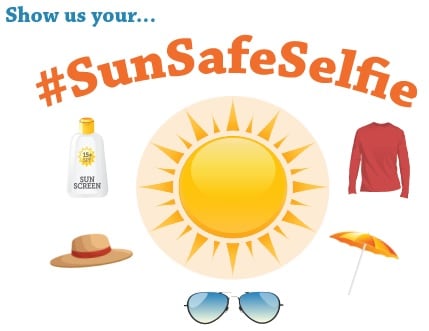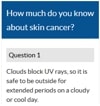Skin Cancer Awareness

Skin cancer survivor Sharon McKennashares her story.
“I’m a fair-skinned redhead. I spent summers as a lifeguard and vacations at the beach, and I never wore sunscreen. As an adult, my vacations centered around sunbathing,” says Sharon McKenna.
“My battle with melanoma began in 2002. To date, I’ve undergone 28 biopsies and had three melanomas surgically removed. I’ve been melanoma-free since 2003, but have had other non-melanoma skin cancers removed since then.
“I learned that knowledge is power. Skin cancer is the most preventable of all cancers. Vacations now center around better things,” Sharon says.
“Since my diagnosis, when my now-teenage son was 5 years old, I’ve kept a colorful basket of sunscreens on the kitchen counter. Sunscreen is a must at our house.
“I learned the hard way: a tan is not a sign of health. Keep your skin the color it came in!”
Sun Safety Tips
Exposure to ultraviolet (UV) rays causes most cases of melanoma, the deadliest kind of skin cancer. To lower your skin cancer risk, protect your skin from the sun and avoid indoor tanning.
Plan your sun protection using these tips—
- Seek shade, especially during late morning through mid-afternoon.
- Wear clothing that covers your arms and legs.
- Wear a hat with a wide brim that shades your face, head, ears, and neck.
- Wear sunglasses that block both UVA and UVB rays.
- Use sunscreen with SPF 15 or higher and both UVA and UVB (broad spectrum) protection.
- Remember to reapply sunscreen at least every 2 hours and after swimming, sweating, or toweling off.
Fast Facts About Skin Cancer
- Skin cancer is the most common cancer in the United States, and includes different types.
- Unprotected skin can be damaged by the sun’s UV rays in as little as 15 minutes.
- Even if it’s cool and cloudy, you still need protection. UV rays, not the temperature, do the damage.
- Anyone can get skin cancer, but some things put you at higher risk.
- Indoor tanning exposes users to two types of ultraviolet rays, which damage the skin and can lead to cancer.
- The most common signs of skin cancer are changes on your skin, such as a new growth, a sore that doesn’t heal, or a change in a mole.


























.png)











No hay comentarios:
Publicar un comentario